Country
Crash of a Rockwell 681BT Turbo Commander in São Paulo: 7 killed
Date & Time:
Dec 16, 2000 at 2120 LT
Registration:
PT-IEE
Survivors:
No
Schedule:
São Paulo – Maringá
MSN:
681-6071
YOM:
1972
Crew on board:
2
Crew fatalities:
Pax on board:
5
Pax fatalities:
Other fatalities:
Total fatalities:
7
Captain / Total hours on type:
600.00
Copilot / Total hours on type:
200
Circumstances:
After takeoff from runway 17 at São Paulo-Congonhas Airport, the crew was cleared to climb to 5,500 feet maintaining heading 270. Weather conditions were poor with clouds, atmospheric turbulences and strong winds. At an altitude of 5,300 feet, the aircraft lost height and descended to 4,700 feet, an altitude that was maintained for 17 seconds. Then the aircraft entered an uncontrolled descent and crashed in four houses located in the district of Vila Anhanguera, about 5,5 km southwest of the airport. The aircraft and all four houses were destroyed. All seven occupants were killed while on the ground, six people were injured, one seriously.
Probable cause:
The accident occurred in poor weather conditions. It was determined that during initial climb, the aircraft's attitude, speed and altitude varied suddenly and rapidly, causing the pilot flying a stressful situation insofar as he believed that artificial horizons presented technical problems. In such a situation, investigators consider probable the hypothesis that the pilot made inadequate corrections, exacerbating the abnormal situation in which he was operating. The following contributing factors were identified:
- The crew were suffered fatigue because they had been on duty for more than 15 hours and were unable to observe satisfactory rest time at Congonhas airport,
- This fatigue certainly affected the pilots in their decision-making,
- The urge to return home and distrust of instruments in difficult flight conditions seriously compromised the performance of pilots and their ability to make decisions,
- A direct contact with passengers was stressful as they were going through a period of mourning and were eager to return home to Maringá,
- Weather conditions were unfavorable and contributed to the anxiety of the crew,
- Poor assessment of these conditions by the pilots,
- The working time of the pilots exceeded the limitations and the operator did not take into account adequate rest conditions for the crew,
- The training of the captain in instrument flights in recent months was insufficient.
- The crew were suffered fatigue because they had been on duty for more than 15 hours and were unable to observe satisfactory rest time at Congonhas airport,
- This fatigue certainly affected the pilots in their decision-making,
- The urge to return home and distrust of instruments in difficult flight conditions seriously compromised the performance of pilots and their ability to make decisions,
- A direct contact with passengers was stressful as they were going through a period of mourning and were eager to return home to Maringá,
- Weather conditions were unfavorable and contributed to the anxiety of the crew,
- Poor assessment of these conditions by the pilots,
- The working time of the pilots exceeded the limitations and the operator did not take into account adequate rest conditions for the crew,
- The training of the captain in instrument flights in recent months was insufficient.
Final Report:
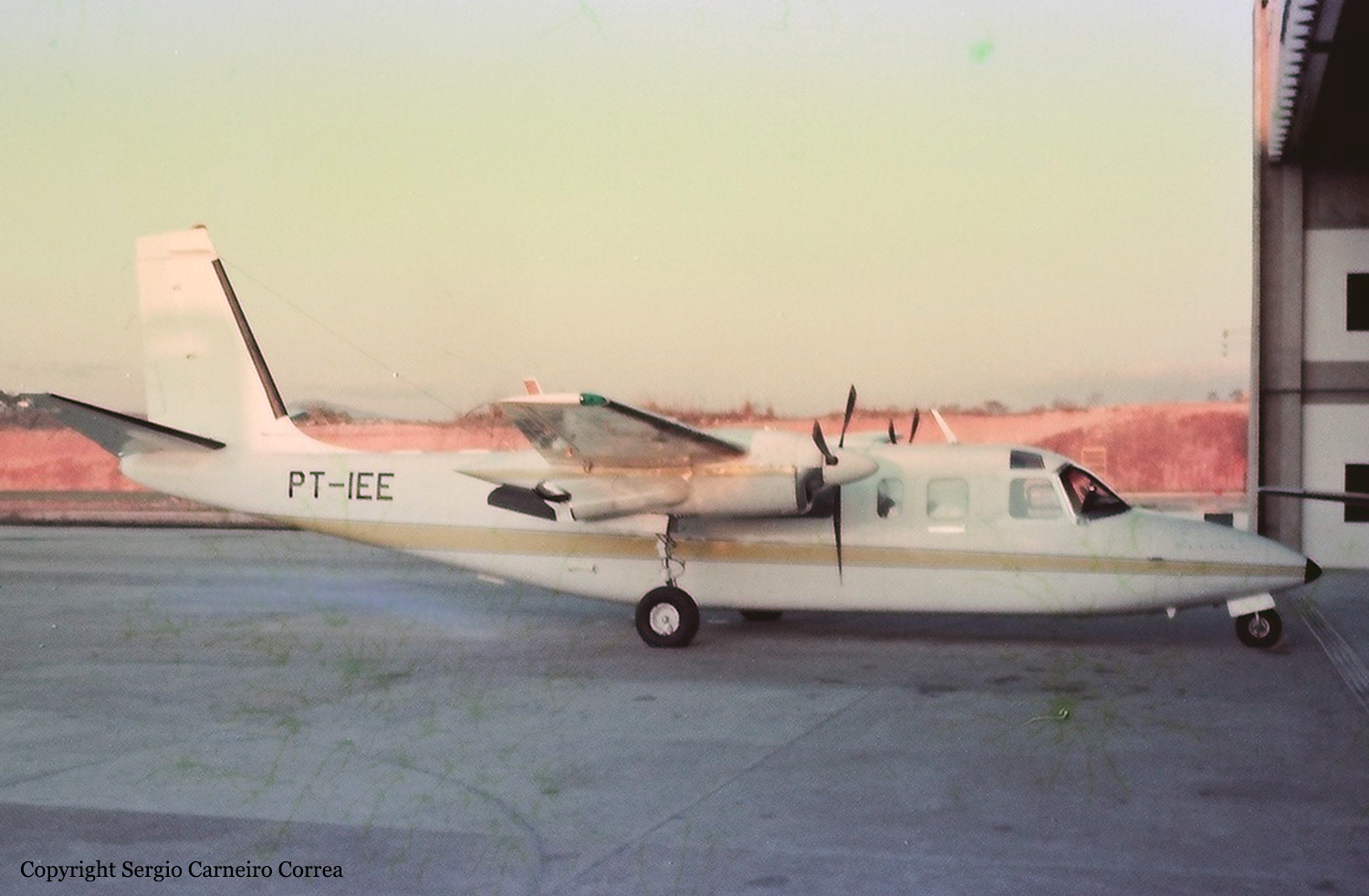
Crash of a Rockwell Turbo Commander 681 in Mansfield: 1 killed
Date & Time:
Nov 30, 1996 at 1030 LT
Registration:
N9129N
Survivors:
No
Schedule:
Dayton - Mansfield
MSN:
680-6056
YOM:
1971
Crew on board:
1
Crew fatalities:
Pax on board:
0
Pax fatalities:
Other fatalities:
Total fatalities:
1
Captain / Total hours on type:
64.00
Aircraft flight hours:
5688
Circumstances:
After 2 previous attempts, the pilot was cleared for a third VOR Runway 14 Approach. He was issued landing information, and he reported the airport in sight. The minimum descent altitude (MDA) for the approach was 1,620 ft msl. The airport elevation was 1297 ft. The airplane was observed by an ATC controller to descend, and the controller's Brite scope (radar) displayed 1,400 ft. The controller observed the airplane's landing light bob up and down, followed by the nose pitching up. At about the same time, a ground witness in the area saw the airplane at low altitude; according to this witness, the pilot tried to 'pull the plane up' just before it collided with the static cable of a power line. The cable was about 85 feet above ground level (1,382 feet MSL) and approximately 2 miles from the approach end of the runway. No preimpact malfunction of the airplane, engine, or VOR was found.
Probable cause:
The pilot's early descent below the minimum descent altitude (MDA), while preparing to land from an instrument approach, and his failure to maintain adequate altitude and clearance from
obstruction(s).
obstruction(s).
Final Report:
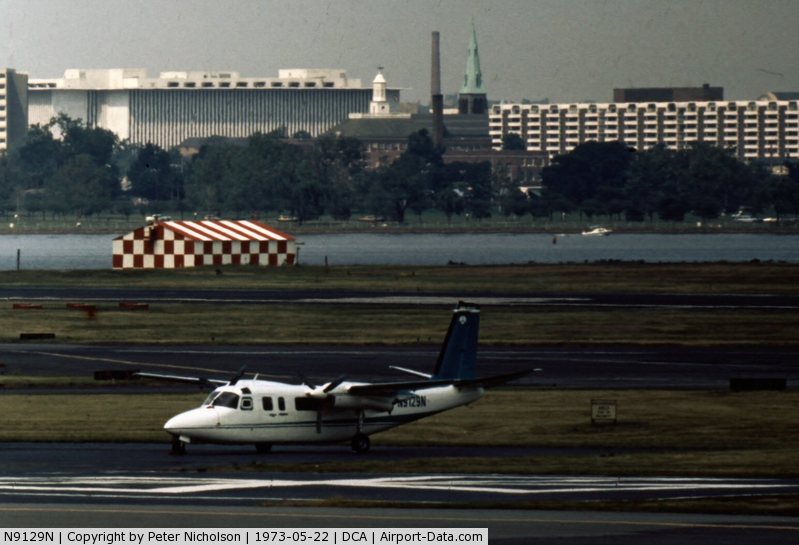
Crash of a Rockwell Turbo Commander 681 in Nassau
Date & Time:
Jun 30, 1995 at 1400 LT
Registration:
N70RF
Survivors:
Yes
Schedule:
Miami - Puerto Plata
MSN:
681-6013
YOM:
1970
Crew on board:
1
Crew fatalities:
Pax on board:
3
Pax fatalities:
Other fatalities:
Total fatalities:
0
Circumstances:
En route from Miami to Puerto Plata, while cruising at an altitude of 13,000 feet, the pilot informed ATC about the failure of the left engine and was cleared to divert to Nassau. On final approach to Nassau Airport, the aircraft struck a fence and crashed about 300 metres short of runway threshold. All four occupants were rescued and the aircraft was damaged beyond repair.
Probable cause:
Failure of the left engine in flight for unknown reasons.
Crash of a Rockwell Turbo Commander 681 in Tamworth: 1 killed
Date & Time:
Feb 14, 1991 at 1025 LT
Registration:
VH-NYG
Survivors:
No
Schedule:
Brisbane - Moree - Tamworth
MSN:
681-6004
YOM:
1969
Crew on board:
1
Crew fatalities:
Pax on board:
0
Pax fatalities:
Other fatalities:
Total fatalities:
1
Captain / Total hours on type:
37.00
Aircraft flight hours:
3717
Circumstances:
VH-NYG had departed Tamworth three days before the accident on an extended passenger charter through Sydney, Moree, Emerald, Brisbane, Moree, and Tamworth. On the day of the accident, the pilot had submitted a flight plan nominating a charter category, single pilot, Instrument Flight Rules flight from Brisbane to Moree, then Tamworth. The flight plan indicated that the aircraft carried 1400 Ib (635 kg) of fuel and had an endurance of 211 min. The aircraft, with four passengers on board, departed Brisbane at 0902 hours and landed at Moree at 1010 after an uneventful flight. All four passengers left the flight at Moree. The pilot reported taxiing at Moree to Dubbo Flight Service at 1047 and called airborne at 1050. At 1117 hours the aircraft was given a clearance to enter the Tamworth Control Zone on descent from 10000 ft. The pilot was told to expect a right downwind leg for runway 30. At 1125 the pilot requested a change of runway to runway 18, stating that there was a fuel flow problem with the left engine. The aerodrome controller (ADC) issued a change of runway (runway 18) to the aircraft, asking the pilot whether emergency conditions existed. The pilot answered in the negative and about 30 sec later informed the ADC that he was conducting one left orbit. The orbit was commenced at about 300 ft above ground level (agl) and approximately above the threshold of runway 18. The orbit was flown with an angle of bank of about 60°. The aircraft developed a high rate of descent during the orbit and rolled wings level in a pronounced nose-down attitude after turning through almost 360°. The aircraft then struck the ground in a grassed paddock about 350 m short of the threshold of runway 18 and in line with the right edge of the flight strip. The aircraft, largely intact, slid in the direction of the runway for 53 m before coming to rest. The pilot, sole on board, was killed.
Probable cause:
The following findings were reported:
- The pilot was misled by erroneous fuel consumption data from the aircraft trend monitoring sheet, the endorsing pilot, and the company fuel planning figures.
- The pilot did not ensure that sufficient fuel was carried in the aircraft to complete the planned flight.
- The pilot made an improper in-flight decision to change runways during a forced landing attempt.
- The pilot misjudged the forced landing approach.
- The pilot was unable to recover the aircraft from the high rate of descent which developed during the approach.
- The pilot was misled by erroneous fuel consumption data from the aircraft trend monitoring sheet, the endorsing pilot, and the company fuel planning figures.
- The pilot did not ensure that sufficient fuel was carried in the aircraft to complete the planned flight.
- The pilot made an improper in-flight decision to change runways during a forced landing attempt.
- The pilot misjudged the forced landing approach.
- The pilot was unable to recover the aircraft from the high rate of descent which developed during the approach.
Final Report:
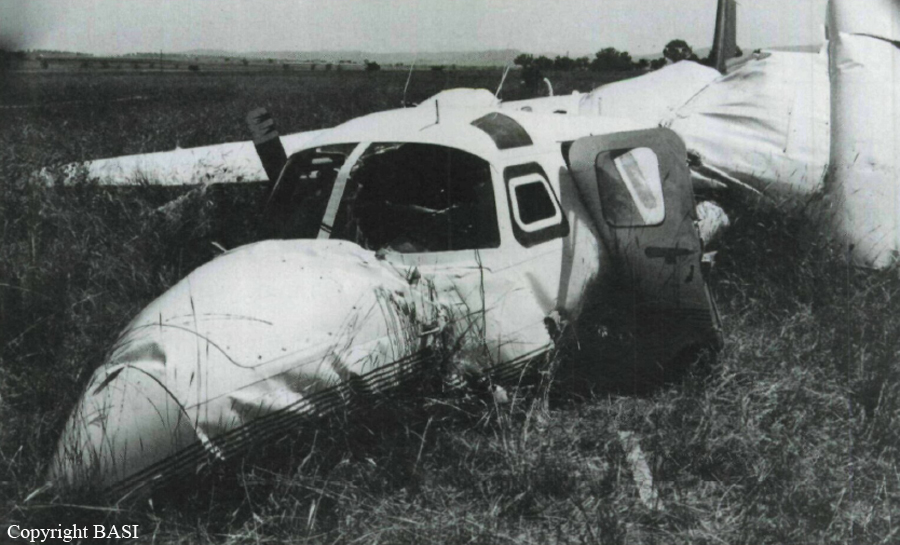
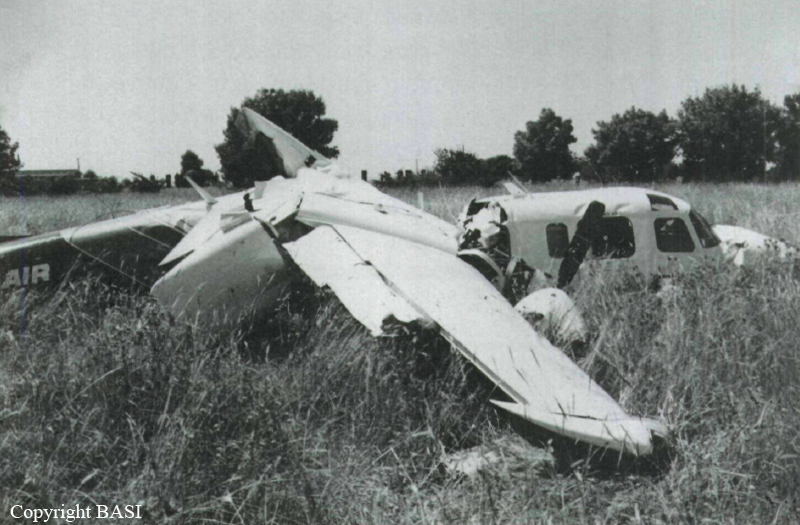
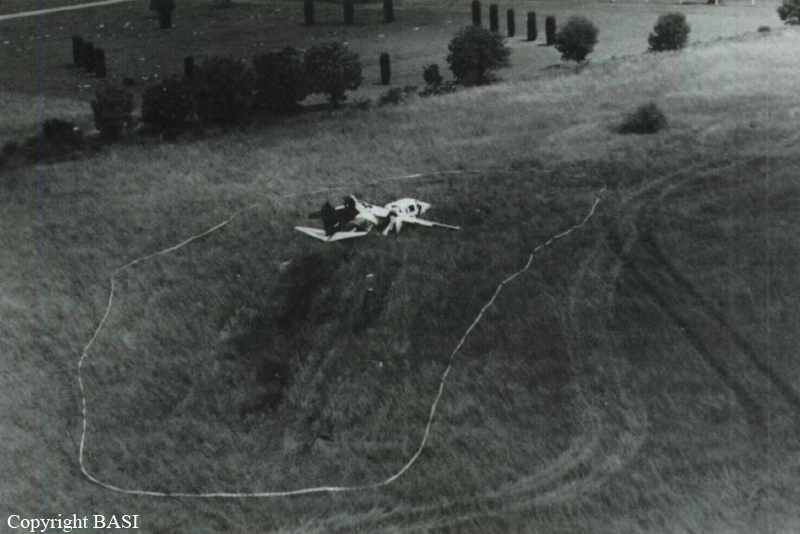
Crash of a Rockwell Turbo Commander 680V in Fort Lauderdale: 2 killed
Date & Time:
Nov 3, 1990 at 1025 LT
Registration:
N541F
Survivors:
No
Schedule:
Fort Lauderdale - Fort Lauderdale
MSN:
680-1609-45
YOM:
1967
Crew on board:
2
Crew fatalities:
Pax on board:
0
Pax fatalities:
Other fatalities:
Total fatalities:
2
Aircraft flight hours:
6288
Circumstances:
The airplane had not flown since June 1989. The flight had made 2 high speed taxi operations before takeoff. Immediately after takeoff the flight called to land. The airplane was observed on downwind 200-800 feet agl, 15-25° nose high. The airplane then stalled. The compressor surge valves for the left and right engines were found in the open position. Both occupants were killed.
Probable cause:
The pilot-in-command's decision to continue takeoff with a known deficiency in the airplane - low power on both engines which resulted from open compressor surge valves. The pilot subsequently failed to maintain airspeed while maneuvering in a turn resulting in an inflight loss of control and a stall/spin.
Final Report:
Crash of a Rockwell Turbo Commander 680V in Keflavik
Date & Time:
Aug 5, 1990
Registration:
N444GB
Survivors:
Yes
Schedule:
Frobisher Bay – Reykjavik
MSN:
680-1565-21
YOM:
1966
Crew on board:
1
Crew fatalities:
Pax on board:
1
Pax fatalities:
Other fatalities:
Total fatalities:
0
Captain / Total hours on type:
15.00
Circumstances:
While approaching Iceland on a ferry flight from Frobisher Bay, the crew declared an emergency due to fuel shortage and requested the permission to divert to Keflavik Airport. On final approach to runway 29, both engines failed simultaneously. The aircraft stalled and crashed on a road located 1,500 meters short of runway. Both pilots were injured and the aircraft was destroyed.
Probable cause:
The pilot's experience on this type of aircraft was limited to 15 hours and he failed to calculate the fuel consumption correctly prior to departure from Frobisher Bay. It was determined that he calculated the flight as being 7 hours and 15 minutes while the autonomy of this aircraft is 8 hours and 20 minutes. Investigations revealed that both engines failed after six hours and 15 minutes of flight. Poor flight planning and preparation were considered as contributing factors.
Crash of a Rockwell Turbo Commander 680 in San Ignacio: 2 killed
Date & Time:
Dec 30, 1989
Survivors:
Yes
Crew on board:
4
Crew fatalities:
Pax on board:
0
Pax fatalities:
Other fatalities:
Total fatalities:
2
Circumstances:
The twin engine aircraft was engaged in an illegal contraband flight, carrying four people and a load of 670 kilos of cocaine. After takeoff from a private strip in San Ignacio, the aircraft was shot down by the Mexican Police and crashed. Two occupants were seriously injured and two others were killed.
Probable cause:
Shot down by the Mexican Police.
Crash of a Rockwell Turbo Commander 681 near El Retiro: 8 killed
Date & Time:
Mar 12, 1986 at 2258 LT
Registration:
HK-2217P
Survivors:
No
Schedule:
Medellín – Cali
MSN:
681-6053
YOM:
1971
Crew on board:
1
Crew fatalities:
Pax on board:
7
Pax fatalities:
Other fatalities:
Total fatalities:
8
Circumstances:
The twin engine airplane departed Medellín-José María Córdova at 2248LT on a charter flight to Cali. During initial climb, the aircraft went out of control and crashed in unknown circumstances near the city of El Retiro, about 13 km southwest of Medellín Airport. The aircraft was destroyed and all eight occupants were killed.
Crash of a Rockwell Turbo Commander 681B in Calhan: 1 killed
Date & Time:
Mar 28, 1985 at 1930 LT
Registration:
N772CB
Survivors:
Yes
Schedule:
Van Nuys - Denver
MSN:
681-6050
YOM:
1970
Crew on board:
1
Crew fatalities:
Pax on board:
3
Pax fatalities:
Other fatalities:
Total fatalities:
1
Captain / Total hours on type:
376.00
Aircraft flight hours:
4500
Circumstances:
During a cross country flight from WI to CA and return, the non instrument, low experienced private pilot, flew into IMC conditions. The aircraft impacted flat snow-covered ground, destroying the aircraft and fatally injuring his passenger. Examination of wreckage revealed no evidence of pre-accident malfunction of the aircraft or its powerplants. A passenger was killed while three other occupants were injured.
Probable cause:
Occurrence #1: in flight encounter with weather
Phase of operation: descent - normal
Findings
1. (f) light condition - night
2. (c) in-flight planning/decision - improper - pilot in command
3. (c) inadequate transition/upgrade training - pilot in command
4. (f) weather condition - turbulence
5. (c) flight into known adverse weather - initiated - pilot in command
6. (c) lack of familiarity with aircraft - pilot in command
7. (f) weather condition - night
8. (c) vfr flight into imc - continued - pilot in command
9. (c) became lost/disoriented - inadvertent - pilot in command
----------
Occurrence #2: loss of control - in flight
Phase of operation: descent - normal
Findings
10. (c) airspeed - uncontrolled - pilot in command
11. (c) altitude - uncontrolled - pilot in command
----------
Occurrence #3: in flight collision with terrain/water
Phase of operation: descent - uncontrolled
Findings
12. (f) terrain condition - open field
13. (f) terrain condition - snow covered
Phase of operation: descent - normal
Findings
1. (f) light condition - night
2. (c) in-flight planning/decision - improper - pilot in command
3. (c) inadequate transition/upgrade training - pilot in command
4. (f) weather condition - turbulence
5. (c) flight into known adverse weather - initiated - pilot in command
6. (c) lack of familiarity with aircraft - pilot in command
7. (f) weather condition - night
8. (c) vfr flight into imc - continued - pilot in command
9. (c) became lost/disoriented - inadvertent - pilot in command
----------
Occurrence #2: loss of control - in flight
Phase of operation: descent - normal
Findings
10. (c) airspeed - uncontrolled - pilot in command
11. (c) altitude - uncontrolled - pilot in command
----------
Occurrence #3: in flight collision with terrain/water
Phase of operation: descent - uncontrolled
Findings
12. (f) terrain condition - open field
13. (f) terrain condition - snow covered
Final Report:

